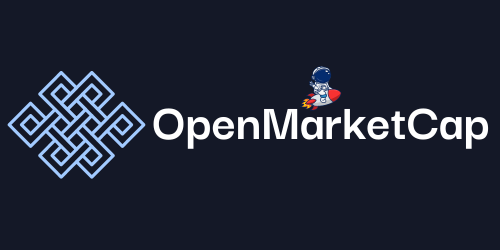Imagine a world where apps aren’t just tools but vibrant ecosystems thriving on a decentralized network. That’s the magic of Ethereum-based DApps, where creativity meets technology in ways we’ve never seen before. From finance to gaming, these applications are reshaping how we interact online, offering us a taste of a future that feels both exciting and a bit unpredictable.
As we jump into the realm of DApps, we’ll uncover not just what they are but how they’re revolutionizing industries and giving power back to the users. Get ready to explore the innovative spirit behind Ethereum and discover why these decentralized applications might just be the next big thing in our digital lives.
Overview of Ethereum Based DApps
Ethereum-based decentralized applications (dApps) represent a significant shift in how software can function and interact with users. They operate on a decentralized peer-to-peer network, meaning there’s no central authority controlling the application or its data. This decentralization ensures that users have more power and control, fostering an environment free from single points of failure.
Open-source development drives transparency and trust in dApps. The code behind these applications is accessible to anyone, allowing users to verify its integrity and security. A great example is Uniswap, a decentralized exchange that enables users to trade cryptocurrencies while ensuring the code is publicly scrutinized. This level of openness builds community trust and encourages collaborative improvement.
Smart contracts play a crucial role in the operation of dApps. These contracts are snippets of code that automatically execute actions based on predefined conditions, creating a seamless experience. For instance, in a dApp like Compound, users can lend or borrow cryptocurrencies without intermediaries, relying solely on smart contracts to execute transactions reliably.
Each dApp consists of two main components: a frontend user interface and a backend that operates effortlessly on the Ethereum network. Users interact with the frontend, which mimics traditional apps, while the backend handles all operations through smart contracts. This separation ensures both an engaging user experience and robust functionality.
Incentivization adds another layer to the appeal of dApps. Users often receive digital tokens as rewards for validating transactions or participating in governance, creating a participatory atmosphere. A notable example is MakerDAO, where users can earn rewards for stablecoin lending and governance participation, driving engagement and decentralization.
Decentralized governance is a vital characteristic of dApps. They allow users to vote on crucial decisions, ensuring that control is distributed among the community rather than concentrated in the hands of a few. This structure empowers users and maintains accountability within the platform.
In exploring these aspects, we find that Ethereum-based dApps not only reshape industries but also offer innovative solutions that empower users. The unique nature of their design invites us to rethink our relationship with technology and each other, pushing the boundaries of what’s possible in the digital age.
Key Features of Ethereum Based DApps
Ethereum-based DApps boast several important features that enhance their functionality and usability. Let’s explore these features in detail.
Decentralization
Decentralization stands at the core of Ethereum-based DApps. Their decentralized architecture means no single entity controls the data or the decision-making process. Instead, users interact directly with one another through peer-to-peer transactions. This method increases transparency and security while eliminating the risks associated with intermediaries. Open-source code supports this, enabling developers to access, review, and modify the application’s code. Projects like Uniswap exemplify this principle, allowing anyone to scrutinize the code and promote trust within the community.
Smart Contracts
Smart contracts play a crucial role in the functionality of Ethereum-based DApps. These self-executing contracts automate agreements when specific conditions are met, effectively removing the need for intermediaries. This automation leads to faster and more efficient transactions, enhancing user experience. Also, smart contracts are immutable and transparent, residing on the blockchain where they can’t be tampered with. This is illustrated by platforms like Compound, where smart contracts help seamless transactions, ensuring that the process remains secure and reliable.
Popular Ethereum Based DApps
Ethereum-based DApps offer innovative solutions across various sectors through decentralization and smart contracts. Here’s a look at some popular DApps categorized by their functionalities.
Finance and DeFi Applications
- Aave: Aave is an open-source, non-custodial protocol that allows us to earn interest on deposits while providing flexibility for borrowing assets. Users can switch between variable and stable interest rates, making it a go-to for those seeking robust financial options.
- MakerDAO: MakerDAO empowers users to borrow stablecoins by leveraging their Ethereum assets. The platform operates through a set of smart contracts, enabling us to maintain control while accessing liquidity without selling our valuable crypto holdings.
- Gods Unchained: Gods Unchained combines strategy with play-to-earn mechanics in a card game setting. We can earn, trade, and truly own our cards, bridging the gap between digital and real-life collectibles.
- OpenSea: OpenSea stands as a premier marketplace for buying, selling, and discovering NFTs. It provides a platform where unique digital assets flourish, allowing us to jump into the vibrant world of limited-edition goods, art pieces, and collectibles.
- Decentraland: Decentraland invites us to explore a virtual world built on the Ethereum blockchain. In this immersive environment, we can buy land, create experiences, and interact with other users, turning our creativity into a lucrative venture.
Through these DApps, we experience firsthand the transformative power of blockchain technology, enabling us to engage deeply with finance, gaming, and the NFT marketplace.
Benefits of Using Ethereum Based DApps
Ethereum-based DApps provide several transformative benefits that enhance user experience, fostering growth across various sectors like finance, gaming, and digital collectibles.
Security and Transparency
We value security and transparency in our digital interactions, and Ethereum-based DApps excel in both areas. The decentralized network eliminates the risk of centralized control, reducing vulnerabilities. Data stored on the blockchain remains immutable, meaning once a transaction occurs, it can’t be changed or tampered with. For example, if we swap digital assets in a game like Gods Unchained, we can trust that the trade remains secure and changes aren’t possible after the fact. This integrity fosters user trust and promotes responsible networking.
Also, the open-source nature of Ethereum means that any developer can contribute to or review the code, enhancing scrutiny on security measures. When we engage with these DApps, we know that their underlying code is accessible and auditable, adding another layer of confidence.
Community and Ecosystem
Community plays a vital role in the success of Ethereum-based DApps. We participate in vibrant networks where developers and users collaborate, sharing insights and driving innovation. This relationship results in a diverse ecosystem tailored to meet various needs. The collective wisdom and creativity within the Ethereum space lead to unique solutions, such as developing new DeFi protocols or innovative NFT projects that elevate user experiences.
For instance, by engaging with platforms like OpenSea, we join a thriving marketplace that connects content creators and collectors. This sense of belonging helps us contribute to an ever-growing community centered around shared interests. The spirit of collaboration empowers us and ensures that we can influence the direction of DApps as they evolve.
Challenges and Limitations
Ethereum-based DApps face significant challenges and limitations that impact their widespread adoption and usability.
Scalability Issues
Scalability remains a primary concern. Ethereum currently processes 30 transactions per second, leading to congestion during peak usage and results in high gas fees. We’ve noticed projects often struggle with long wait times for transactions to confirm, especially during busy periods. To tackle this, developers carry out layer 2 scaling solutions like Optimistic Rollups and zk-rollups that handle transactions off-chain. This approach effectively reduces congestion on the main Ethereum network while maintaining security.
Ethereum 2.0 is an anticipated upgrade that introduces shard chains, which enables the network to handle multiple transactions simultaneously. Shard chains allow the system to distribute workload across various nodes, improving efficiency. If successful, this upgrade could significantly enhance Ethereum’s scalability.
Regulatory Concerns
Regulatory concerns add another layer of complexity. The decentralized nature of DApps challenges traditional regulatory frameworks, such as Know Your Customer (KYC) and Anti-Money Laundering (AML) requirements, often used for centralized services. Regulators find it difficult to apply rules based on specific locations when DApps operate globally. This regulatory gray area can lead to uncertainty for developers and users alike.
Some developers have been proactive by incorporating measures to address these concerns through self-regulatory practices. But, until clearer regulations emerge, the DApp landscape remains in a state of flux, creating hurdles for innovation and adoption. Understanding these challenges can help us navigate the evolving world of Ethereum-based DApps more effectively.
Conclusion
Ethereum-based DApps are reshaping how we interact with technology and finance. They’re not just a passing trend; they represent a shift towards decentralization and user empowerment. While challenges like scalability and regulatory hurdles exist, the innovation in this space is exciting to watch.
As developers tackle these issues, we can expect a more robust ecosystem to emerge. The potential for growth and evolution is huge. We’re all in for a wild ride as Ethereum continues to pave the way for a new digital landscape. Let’s keep exploring and embracing the possibilities together.

